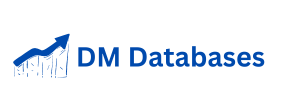The first part of the URL contains the protocol. The types of protocols that are now quite common on the internet include HTTP and HTTPS. Although it comes first in the URL array format, the protocol is optional. You can write it or not in the address bar in the browser.
In the next sequence, the protocol is
Followed by the subdomain . Generally Bolivia Phone Number List you find a lot of WWW subdomains on the internet. This subdomain indicates that a web page is available for access with the internet using the HTTP protocol to communicate.
The more specific the destination is, the more paths to resources are included. In writing, multiple paths will be separated by a slash symbol.
Parameters are part of processing data on the page. This section is defined after the symbol (?) in the URL. In writing, parameters are separated by a sign (=), but for parameters with several variables the separator symbol used is (&).
The first good e-mail etiquette guide is, make sure the e-mail address you use reflects a professional identity. Avoid using email addresses that are too informal, humorous, or unrelated to the purpose of your email. Use an email address that includes your full name or company name to make a strong, professional impression.
For example, you could use an email subject like this:
“Customer Service Daily Report”
“Weekly Meeting Invitation”
Use Proper Greetings
Begin the email with an appropriate DM Databases greeting, depending on your relationship with the recipient. For formal situations, use a greeting such as “Mr/Ms” followed by the recipient’s name. If you have a more intimate or informal relationship with the recipient, you can use a greeting such as “Hello” or “Hi” followed by the recipient’s name.
For example, you can use greeting words like:
dear team
Dear Mr. or Mrs.
Good morning, sir/madam
Write in Formal and Straightforward Language
The second guide to good email etiquette is the use of language. Use professional language and avoid using slang, jargon or inappropriate words. Convey messages clearly, concisely and to the point. Avoid using sentences that are too long or complicated. Use correct g rammar and check spelling before sending emails.
For professional emails, such as business emails, pay attention to using grammatically appropriate sentences. If you use Indonesian, of course you have to pay attention to the General Guidelines for Indonesian Spelling.







